World Usability Day 2022: DesignOps Edition
"Our Health" - Discussion Panel
This year’s World Usability Day discussion panel was made possible by Rosenfeld Media’s DesignOps Community. Our panel featured Chaya Rusk: Digital Design Program Manager at CVS Health, Jeremy Beaudry: Lead Healthcare Experience Designer at hiCOlab, and Sandra Sweat: UX Strategist at AnswerLab.
The goal of our discussion was to shine a light on endemically ingrained challenges that human-centered researchers and designers face in the healthcare industry.
This post will lay out the questions covered and panel responses as paraphrased transcriptions to tease out the salient points. For full access to the discussion panel recording, sign up for your free Rosenfeld community membership.
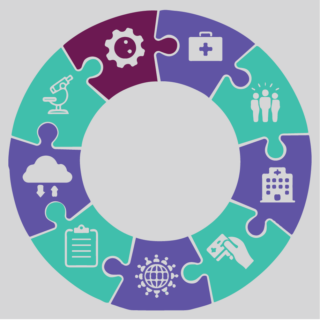
We’re in a better place, but we have more of a technical mountain to climb to administer [digital healthcare] in a way that’s more patient-centered.
– Chaya Rusk
Coming out of the pandemic, where there was a necessary surge in Digital Healthcare, are we in a better place, or have things become more complex?
Chaya: We’re in a more complex place. As we move to a place of more digital access—we have equity concerns, but we’ve expanded the ability for more people to participate. The pandemic forced everyone to move to digital access in healthcare—things the disability community has been advocating for. We’re in a better place with more tools available, but we have a bigger technical mountain to climb to actualize it in a sustainable way.
Sandra: It’s more complex because we’ve added another touchpoint. But it’s also better because awareness of health is more top of mind – we’re talking about it more than just behind closed doors or with stigma associations – which allows for more opportunities for solutions as we discuss more things openly.
Jeremy: The pandemic is the platform that scaled up digital workflow and operations to support it. And even though it brought up a whole host of additional consequences and complexity that we’re all still working through. The upside is that the healthcare industry is good at working through times of crisis.
What was your biggest challenge or success in this last year that others can learn from?
Chaya: Customer expectations in omnichannel are more challenging. We’re monitoring way more than the end-to-end journey of a single digital tool, interaction, or job-to-be-done; it’s the patient’s full engagement with healthcare. In that context, the biggest challenge was to get to a place where the design organization could actually be on the same page—so, we serve all of those business units holistically across a massive enterprise with centralized backlogs and clearly articulated priorities. The key is coordinating across departments and partnering with product, engineering, clinical, marketing, etc.
Sandra: What research to do when – who with? So do some pre-discovery research first – find the right audience, the right test/recruiting criteria – who actually does those tasks? Knowing who the right end users are and who is not only supposed to do them but regulated from a legal perspective to perform. Keeping Educated about who the stakeholders might be – for example: know that State by State, there are varying degrees of authority on the patients’ care. This widens the scope of who to include in solution sets.
Jeremy: One challenge we took on was demonstrating the value of human-centered design in a whole range of ways to solve problems and achieve results. Facilitating leadership, business strategy, process improvement, etc. Use tools and expertise to solve non-design-specific problems. So now we’re running teams of executives through design sprints and managing a portfolio of design-led projects. Ultimately transforming the culture to taking a design-led approach to problem-solving across the org.
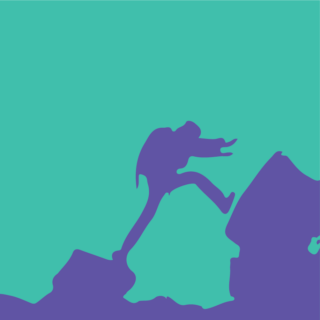
“We’re starting to pivot where we have an impact. We’re using our design expertise to influence how to build strategies and solve problems. We’re running executives through design sprints now, and ultimately we’re transforming our culture to be a little more design-led, and to be a bit more risk averse, and to try more ways of problem-solving for the organization.“
– Jeremy Beaudry

“It can be frustrating to not see the changes happen immediately. I see the possibilities, and I know this can change, and then you hit the wall of regulatory compliance. So you have to look small to go big because even though healthcare is huge, little changes can make a big impact.“
– Sandra Sweat
What are the biggest issues we need to overcome, and can we rely on existing standards and best practices, or are new innovative solutions needed?
Chaya: Maturity of the design org and asking the right questions are the biggest issues. Is this thing [digital service/product/feature] even what our customers need? So, the emphasis has to be on discovery – asking the right questions – slowing down to speed up. We have to understand what externalities we will create through the things we make. What tech debt or design debt are you incurring? It needs data-informed, qualitative research-informed leaders and literacy.
Sandra: Continuous Learning: because the industry is complex and large institutional changes at the scale of healthcare take a while, so you need to be prepared to pivot and make thoughtful, informed, and inspired changes. Look smaller to go bigger and make little changes that can make a difference. Most problems in healthcare a big and hairy with lots of stakeholders, so taking on small changes to improve experiences can impact everyone.
Jeremy: The healthcare context is constantly in a mode of crisis – so what can we do to remove friction in that context? Design that adds more things can further complicate an already complicated set of tasks. So a guiding principle we use is “How can solutions we produce alleviate the stress on the patient and the practitioner side”?
Chaya R: (Follow up) – Systems thinking is the mandate of DesignOps. We have to think of the full-service design also for our partners in the ecosystem, like pharmacists, those executing our designs, and the experiences they’re having. It all informs patient care and experience.
Jeremy: (Follow up) Healthcare is a 360 Co-Creative set of services – We’re trying to bring a focus on the human experience to support the mental and emotional state of the employees in the system, clinicians, providers, and staff. If they’re burned out, stressed, or emotionally fried, they can’t provide quality patient experiences.
What organizations are making major advancements in the health and healthcare sectors? Is it evident that DesignOps is playing a role?
Chaya: In CVS’ Enterprise Design sphere, with things like our HealthHubs, we see populations that need access to healthcare and aren’t necessarily digitally enabled or digitally driven. Measuring health and onboarding folks into the system can be challenging in those instances. CVS has the scale to bridge concierge services at our brick-and-mortar locations to connect with communities that are less digital-first when it comes to managing conditions or engaging with their care.
Sandra: Rural Health (generally) – Hospitals and Clinics have to be very creative b/c of the resources they have, where they are, and how different the populations they serve – the primary challenge is keeping doctors in place in rural communities. So they are innovating on ways to minimize the time people need to be on the computer, for example, integrating scribes into the process a little more seamlessly and leveraging grants to support them through challenges so they can continue giving care in their communities.
Jeremy: Pictal Health focuses on visualizing patients’ health histories, particularly those with complex chronic health conditions. Pictal is building a tool to serve folks struggling to get a diagnosis – mainly with complex health histories. It provides a way to visualize with all the various providers all the different parts of their health history.
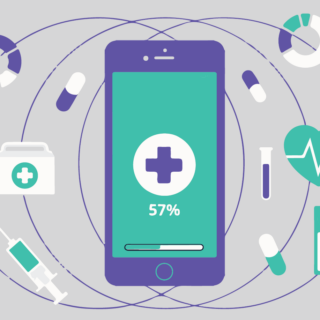
“CVS HealthHubs are really inclusive in bringing chronic condition management closer to folks that might be in a retail store to pick up, for instance, laundry detergent. A lot of the populations that need to access care are often not digital-first. Some of the solutions that are closing those gaps are what I’m most excited about.“
– Chaya Rusk
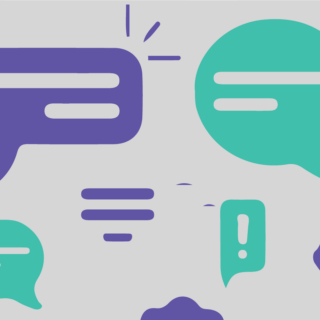
“Every legal and compliance team [anyone in a technical/meaty policy space] has a slightly different view of the world and what their risk tolerance is and how much they actually know about what you’re trying to do and build a common understanding to bridge the gap. So they will better understand what you are trying to achieve and how it will help their business.”
– Sandra Sweat
Question from Rosenfeld community member Kristen Ramierez: Do you have any stories to talk about ways around and through red tape in healthcare?
Sandra: Work on building relationships with legal and compliance or in medical records as key stakeholders – anyone that has a meaty relationship on the policy side. Discover what they know and what their positions are. Learn what they know about how human-centered research and design work. This will give you a sense of the gaps and where you can help build bridges and common understanding. You’ll succeed if you convince them that you’re not the enemy. You’re here to support the business needs – this can only start from a place of shared understanding.
Chaya: Conceptual alignment or benchmarking our understanding of DesignOps is key. Even though it’s a relatively young but increasingly entrenched field, there’s a lot of storytelling to do still. DesignOps encompasses so many things: design systems, research operations, production support, the distinction between program management and project management, etc. DesignOps is grounded in relationships, principles, and processes so our teams can do better work. Anywhere we can be informed by metrics can help make the argument is key – DesignOps’ function is to facilitate better relationships but also guide perception so we can do better work.
What are some resources that all healthcare researchers and designers and ops managers benefit from?
Jeremy: Training on research with human subjects. some of the research that I’ve done has been governed by an IRB (Institutional Review Board) because some of the research we do includes personally identifiable information. Not everyone has to go through this training formally, but you should be aware of these standards.
Chaya: IAAP: Accessibility practitioners who support accessibility, diversity, and inclusion. These days automated research recruiting can be biased away from inclusive user bases—products like Fable address that concern. Humane By Design offers good HCD principles for all of us. It also applies to our own DesignOps practices: the governance, process, and tools to help prevent burnout for the things we design for our own organization and the people in it.
Sandra: Universities always have their IRB online – it’s a great educational resource to help you understand the guiding principles. Some even provide cases of what happened prior to there being standards in place – so you can learn from the unintended consequences of research and design.
Additional Links Shared in Session:
Condens: HIPPA Compliant Insight Repository
Design for Care Innovating Healthcare Experience By Peter Jones
Healthcare COVID-19 Impact Assessment
UX Challenges in Healthcare
UX for Healthcare: What You Need to Know Before You Start
We left our Figjam board open for ongoing community contribution to this topic.

“[Paying attention to standards of governance in research with human subjects] can give you some ideas of things you should be thinking about when you conduct research in sensitive areas with people in the healthcare context.”
– Jeremy Beaudry
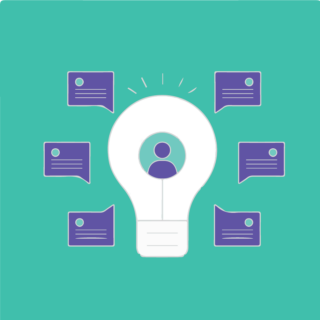
“We hope this discussion provided insights, lessons, and inspiration to advance human-centered research and design operations in healthcare.”
– Jon Fukuda
Wrapup and Closing Insights
There were some key themes and insights from the discussion; we teased these out for you to take away from this post:
Themes
Digital Transformation in Healthcare took a spike during the pandemic, and things have become more complex, but the industry knows how to function with high-stress complexity.
The healthcare environment includes engaging people in moments of crisis. Those conditions aren’t always prone to generative research but are a high priority for ease of use and optimization in design.
The healthcare environment is complex. Solutions require omnichannel and whole systems thinking to take a 360 approach that includes patients, practitioners, Drs, Pharmacists, etc.
Insights
Sometimes addition by subtraction – how do you improve the experience by removing load instead of adding new load?
Time scales for change in Healthcare take longer (slower moving) – look for smaller quick wins, and ways to make little changes to improve outcomes.
Drive change through practice management, establishing research operations, and involving executives in design sprints are examples in the discussion.
Everything is a priority. Triage culture in healthcare is strong, but experience design prioritization is a different beast. When everything is a priority, it takes coordination and collaboration to be merciless in prioritization.
We can’t thank our panelists enough for their time and the insights they lent to our panel discussion. We hope the community found the session valuable, and we look forward to continuing the discussion to move and advance research and design ops in the healthcare design community. Thanks to Louis Rosenfeld and the Rosenfeld Media organization for supporting this community and hosting this discussion.